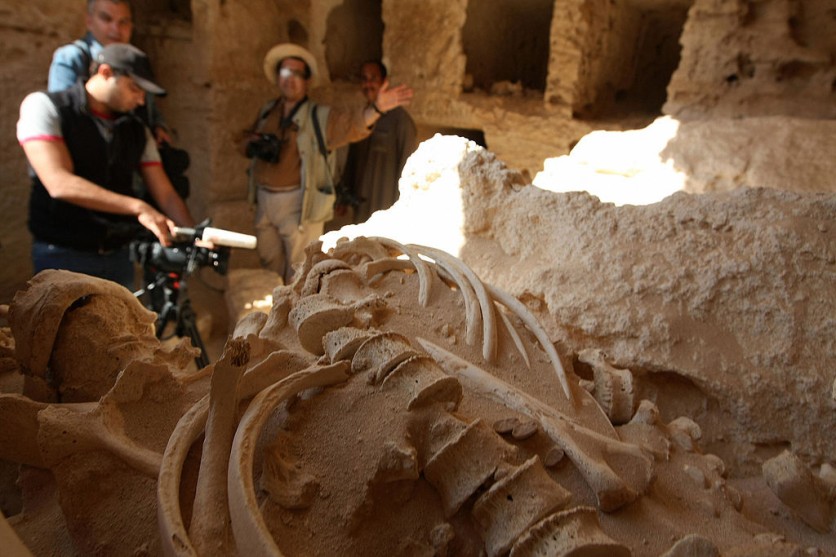Archaeologists found a large tunnel hidden beneath an ancient Egyptian temple, which scholars could lead to the lost tomb of Cleopatra, the last pharaoh of Egypt who rules more than 2,000 years ago.
According to a report by VICE's Motherboard, some researchers believe that the tunnel runs for about a mile beneath the ruins of Taposiris Magna, a city near Alexandria that was founded in the 4th century B.C., and where Cleopatra and her lover, the Roman statesman Mark Antony, are thought to have been buried.

Geometric "Miracle"
A statement published last week by the Egyptian Ministry of Tourism and Antiquities noted that the underground tube was discovered around 65 feet below a temple dedicated to the deity of the underworld, Osiris. It is described as a geometric "miracle".
The lead archaeologist of the Dominican-Egyptian team that found the tunnel, Kathleen Martinez, has spent more than 15 years looking for Cleopatra's tomb at Taposiris Magna.
In the temple, the team has already uncovered secret passageways and relics, including a collection of coins with Cleopatra's name and face.
Around the time of Cleopatra's rule, which lasted from 51 to 30 BC, researchers discovered many mummies in the temple in 2021. One of these mummies was buried with a golden tongue, which was believed to enable the dead to communicate with Osiris.
Numerous earthquakes that have shaken the area since ancient times have hindered excavations at Taposiris Magna. Water seeping in from the Mediterranean Sea has destroyed and drowned a large portion of the temple.
Submerged Tunnel
According to the team, parts of the recently found tunnel remain submerged.
Nevertheless, the team was able to measure the tunnel's size and learn that it was once an aqueduct that provided water to thousands of residents of the historic city.
According to Martinez, the Taposiris Magna's structure is comparable to the Eupalinos tunnel on the Greek island of Samos, which was erected several centuries earlier.
There is still debate among scholars about whether the temple at Taposiris Magna is likely to contain the fabled queen, therefore it is unknown whether this tunnel will aid in locating Cleopatra's tomb.
The discovery of Cleopatra and Antony's bones, whether in Taposiris Magna or elsewhere, would be a significant event comparable to the discovery of King Tutankhamun's tomb in 1922, a pharaoh who ruled more than 3,000 years ago.
Cleopatra's legacy has reverberated for years now as she has been the subject of numerous books, artworks, cinematic adaptations, and even a Shakespeare play. Her rule basically marked the end of the Hellenistic period.
Discovering the queen's tomb will finally put an end to the mystery surrounding her whereabouts and shed more details about her illustrious life.
This article is owned by Tech Times
Written by Jace Dela Cruz
ⓒ 2025 TECHTIMES.com All rights reserved. Do not reproduce without permission.




